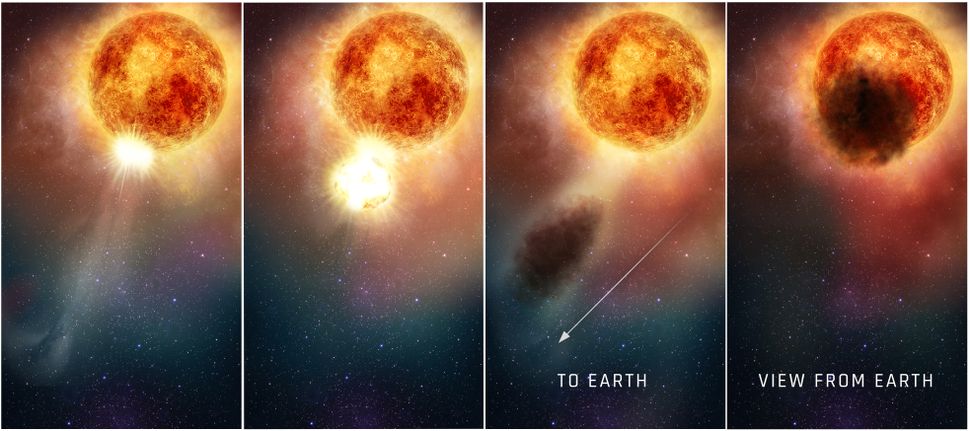One of Earth's nearest stars may be a dark matter factory
By Adam Mann - Live Science Contributor 16 hours ago
A hunt for hypothetical axions streaming from Betelgeuse turns up empty but helps physicists set constraints on their properties.

A visual illustration of Betelgeuse's mysterious dimming. A new study suggests it could be a good candidate for finding axions. (Image credit: NASA, ESA, and E. Wheatley (STScI))
Deep in its searing hot belly, the giant red star Betelgeuse could be producing tons of hypothetical dark matter particles called axions that, if they exist, would give off a telltale signal. A recent search for such a tantalizing emission has turned up empty, but helps physicists place new limits on the putative axion’s properties.
Appearing as a bright red dot in the constellation Orion, Betelgeuse is a well-studied star. It is cosmologically close, being only 520 light-years from Earth, and made headlines last year when it started mysteriously dimming, leading some researchers to believe it could be preparing to explode as a supernova.
Because it is such a large and hot star, Betelgeuse might also be a perfect place to find axions, scientists say. These conjectured particles could have perhaps a millionth or even a billionth the mass of an electron and are ideal candidates to make up dark matter, the mysterious substance vastly outweighing ordinary matter in the universe but whose nature is still largely undetermined.
As dark matter, axions shouldn’t interact much with luminous particles, but according to some theories, there is a small probability that photons, or light particles, could convert back and forth into axions in the presence of a strong magnetic field, Mengjiao Xiao, a physicist at the Massachusetts Institute of Technology (MIT) in Cambridge, told Live Science.
More:
https://www.livescience.com/axions-coming-from-betelgeuse.html
